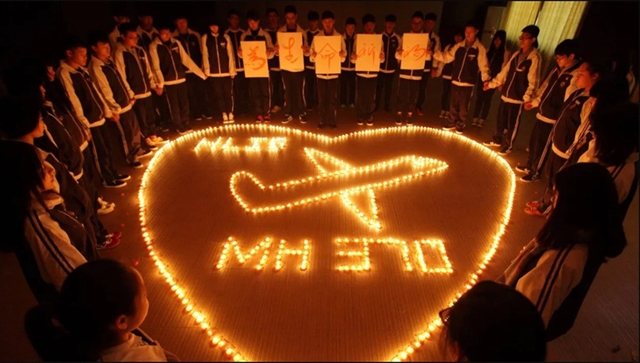 Society
Society

 |
| Boats anchor at Thọ Quang fishing port to take shelter from the typhoon in the central coastal city of Đà Nẵng on Thursday. — VNA/VNS Photo Khoa Chương |
HÀ NỘI — As Typhoon Kalmaegi moves closer to the mainland, provinces across the central and Central Highlands regions are racing to complete last-minute preparations to mitigate its potentially devastating impact.
Kalmaegi is the 13th storm to hit the East Sea (internationally known as the South China Sea) this year.
The latest warning from the National Centre for Hydrometeorological Forecasting said the eye of the storm is expected to make landfall between Quảng Ngãi Province and Gia Lai Province from late Thursday afternoon to Thursday night.
Eastern parts of Gia Lai and Quảng Ngãi provinces will experience the strongest winds, reaching levels 10–13, with gusts reaching levels 15–16, strong enough to destroy unreinforced structures.
Western parts of the provinces will also face gale-force winds of up to level 9, with gusts as high as level 11.
The most severe winds are expected between 5pm on Thursday and 4am on Friday.
Heavy rain is forecast for large parts of central Việt Nam, with rainfall between Đà Nẵng and Đắk Lắk Province expected to reach 200-400mm, and isolated areas up to 600mm.
From southern Quảng Trị Province to Huế, Khánh Hòa Province and Lâm Đồng Province, rainfall could total 150-300mm.
Rain will extend northwards to Thanh Hóa Province by Friday and Saturday.
In Gia Lai Province, authorities have fully activated local emergency plans under the 'four on the spot' principle of local command, manpower, logistics and materials.
Troops, police and youth volunteers have been dispatched to help residents reinforce homes, move belongings and prepare evacuation shelters.
Lieutenant General Lê Ngọc Hải, commander of Military Region 5, inspected readiness at Quy Nhơn fishing port and local evacuation centres on Thursday morning.
More than 6,800 personnel, 46 vehicles, six armoured carriers and 27 rescue boats have been placed on standby.
In Đắk Lắk Province, local authorities have ordered the evacuation of residents from high-risk areas by noon on Thursday, warning that those who refuse will be forcibly removed for safety.
Schools across the province are closed from Thursday afternoon to the end of Friday.
Construction cranes at coastal building sites must be lowered, while Tuy Hòa Airport has suspended multiple flights. Some domestic routes will resume after midday on Friday.
 |
| Police assist fishermen on the coast in moving their boats ashore to avoid the typhoon's impacts on Thursday in the Central Highlands province of Đắk Lắk. — VNA/VNS Photo Ngọc Minh |
Evacuation
Facing an imminent threat from the typhoon, authorities in the central province of Quảng Ngãi have prepared an emergency plan to evacuate nearly 27,000 households comprising over 89,000 residents.
Coastal localities and provincial forces have been put on high alert, activating contingency measures to cope with the storm.
Authorities are prioritising accurate weather updates, establishing safe shelters and ensuring sufficient supplies of food and drinking water for evacuees during their stay.
Sa Huỳnh Ward, home to more than 32,000 residents, is expected to be directly affected when the typhoon makes landfall.
Chairman of the Sa Huỳnh Ward People’s Committee Nguyễn Viết Thanh said the local administration had conducted detailed inspections across residential areas in line with its storm response plan.
“We have identified around 3,600 people living in unsafe houses who need to be relocated,” he said.
Over the past two days, the ward has been broadcasting storm warnings through mass media and loudspeakers, urging residents to reinforce their homes and trim trees before the storm hits.
Local neighbourhood groups have formed volunteer teams to visit households directly, assisting them in securing property and preparing for evacuation to designated safe areas.
Thanh said 65 public evacuation sites have been prepared in the ward, and are fully equipped with mats, blankets, food and drinking water.
“Evacuation will be carried out several hours before the storm makes landfall to ensure everyone’s safety,” he said.
Phạm Hồng Mong, head of Thạch Bi 2 residential group, said mobile loudspeakers have been deployed to urge residents in unsafe houses to move to shelters from Thursday morning.
“For elderly people living alone or those who are ill, we are working with local task forces to help them reach safe places. No one will be allowed to remain at home when the storm arrives,” he said.
In Mỏ Cày Commune, four coastal villages – Minh Tân Bắc, Minh Tân Nam, Đạm Thủy Bắc and Đạm Thủy Nam – lie in high-risk zones. Local authorities have received support from border guards to help village residents secure their homes.
Trần Ngọc Nam, chairman of the Mỏ Cày Commune People’s Committee, said hundreds of houses have already been reinforced.
“To protect people’s lives, we have arranged to relocate 621 households, or 1,342 people, to stay with 413 families in more solid houses,” he said.
In Đà Nẵng, hundreds of fishing boats have sought refuge at Thọ Quang fishing port.
By 7.30am on Thursday, 654 vessels had anchored safely, including 388 from Đà Nẵng, 77 from Quảng Ngãi and dozens more from other provinces.
Port authorities, border guards and police are working around the clock to manage the flow of boats and prevent collisions.
“We rushed back to shore overnight as soon as we heard how strong the typhoon could be,” said fisherman Nguyễn Văn Hậu. “We’ve secured the ropes, checked all our gear and made sure everything is tied down. A small mistake can cost everything.”
In Khánh Hòa Province, hundreds of households in the Thành Đạt and Thành Phát residential clusters of Nam Nha Trang Ward were evacuated early on Thursday from areas at high risk of landslides on the slopes of Hòn Rớ Mountain.
Many homes in the area are makeshift tin-roofed structures perched on steep hillsides, posing serious safety risks.
Elderly residents and families were assisted by local officials, police and border guards in relocating to temporary shelters at community halls and schools.
“I live alone near the hillside,” said 80-year-old Ngô Thị Tý. “The soldiers came to help me pack and move to a safe place. I feel much more at ease now.”
Provincial authorities have ordered a full review of all vulnerable zones and instructed localities to forcibly evacuate residents if necessary. They have also urged people to stockpile food, drinking water and essentials, and to elevate possessions in flood-prone homes.
Khánh Hòa Power Company has deployed rapid-response teams to reinforce power lines, secure transformers and prepare backup generators to ensure electricity supply for critical facilities during and after the storm.
PM’s dispatch
Prime Minister Phạm Minh Chính signed Official Dispatch 210/CĐ-TTg on Thursday, directing ministries, agencies and local authorities to urgently implement emergency measures in response to the typhoon and the heavy rain and flooding expected to follow.
He instructed the ministers of National Defence, Public Security, Agriculture and Environment, Construction, Industry and Trade, Science and Technology, Education and Training, and Health, along with the Party secretaries and chairpersons of people’s committees from Quảng Trị Province to Khánh Hòa Province, to lead and direct emergency response operations at the highest level of urgency.
He emphasised the need to ensure the safety of human lives and minimise property losses, particularly in areas already suffering from recent prolonged flooding.
Mass evacuation from danger zones is to be completed before 3pm on Thursday.
Local authorities are required to evacuate all residents from unsafe and high-risk areas, including weak houses, low-lying communities and coastal and riverside zones prone to landslides, large waves and storm surges.
No residents are to remain on boats, fish farms or offshore watch huts once the storm is within direct range.
“In cases of non-compliance, compulsory measures must be enforced to protect people’s lives,” the dispatch states.
PM Chính also ordered proactive management of water levels at hydropower and irrigation reservoirs to ensure safety and prevent flooding downstream.
Reservoirs are to be scientifically regulated to avoid the risk of compounded floods, while ensuring readiness to absorb incoming water from heavy rainfall. — VNS




